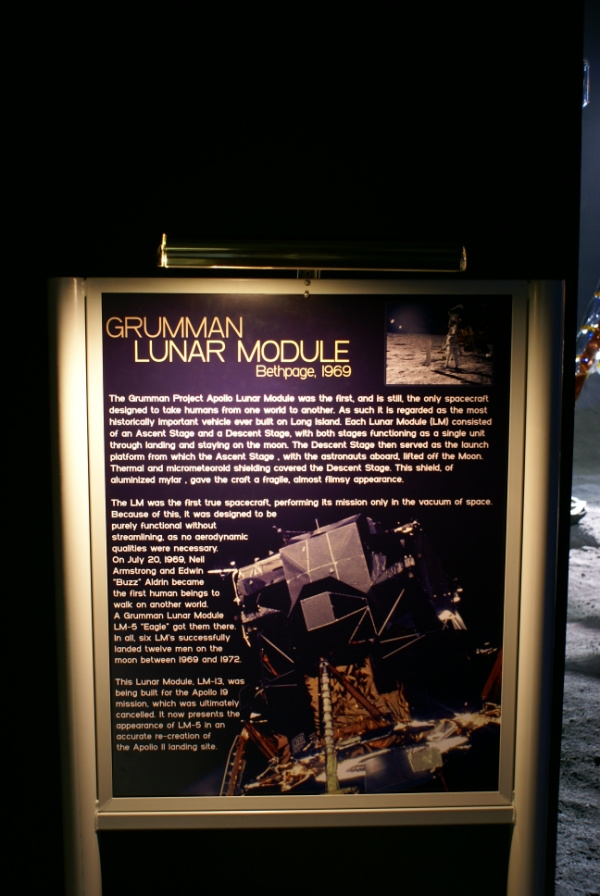| Prev |
heroicrelics.org Cradle of Aviation Site Index LM-13 Gallery |
Next |
dsc34821.jpg
One of the signs accompanying the lunar module. It reads
Grumman Lunar Module
Bethpage, 1969
The Grumman Project Apollo Lunar Module was the first, and is still the only, spacecraft designed to take humans from one world to another. As such it is regarded as the most historically important vehicle ever built on Long Island. Each Lunar Module (LM) consisted of an Ascent Stage and a Descent Stage, with both stages functioning as a single unit through landing and staying on the moon. The Descent Stage then served as the launch platform from which the Ascent Stage, with the astronauts aboard, lifted off the Moon. Thermal and micrometeoroid shielding covered the Descent Stage. This shield, of aluminized mylar, gave the craft a fragile, almost flimsy appearance.
The LM was the first true spacecraft, performing its mission only in the vacuum of space. Because of this, it was designed to be purely functional without streamlining, as no aerodynamic qualities were necessary. On July 20, 1969, Neil Armstrong and Edwin "Buzz" Aldrin became the first human beings to talk on another world. A Grumman Lunar Module LM-5 "Eagle" got them there. In all, six LMs successfully landed twelve men on the moon between 1969 and 1972.
This Lunar Module, LM-13, was being built for the Apollo 19 mission, which was ultimately cancelled. It now presents the appearance of LM-5 in an accurate re-creation of the Apollo 11 landing site.

| Time picture taken | Tue Jun 26 10:32:28 2007 |
| Location picture taken |
Long Island to the Moon Gallery Cradle of Aviation Museum Garden City, NY |
| Prev |
heroicrelics.org Cradle of Aviation Site Index LM-13 Gallery |
Next |